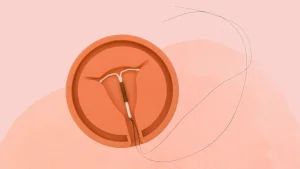
IUD Removal: What to Expect and Does It Hurt?
Removal of the intrauterine device (IUD) is generally simple and safe. But does removing the IUD cause pain?
When it comes to birth control options, the intrauterine device (IUD) is considered a good option for many women. It is a device placed inside the uterus to prevent pregnancy. If you use an IUD, you should remove it from time to time. You may be planning to become pregnant or your device may be close to its expiration date. But the thought of removing an IUD can be scary for anyone. You’re wondering if removing the IUD will hurt. Read on to learn what to expect after your IUD is removed.
What is an intrauterine device?
IUD is a small, T-shaped device made of flexible plastic or copper that is inserted into the uterus to prevent pregnancy. There are two types of intrauterine devices:
Copper intrauterine device
They are made of copper and plastic and do not contain hormones, but they are still effective because copper can kill sperm.
Hormonal intrauterine device
They contain a substance called the progestin levonorgestrel, which causes the cervix to thicken and the lining around the uterus to thin. This helps prevent pregnancy.
Intrauterine devices provide long-term protection. Hormonal IUDs usually last 3 to 7 years, while copper IUDs can provide protection for up to 10 years. Unlike birth control pills or other birth control pills, it requires little maintenance once inserted and can prevent unwanted pregnancies.

How is an IUD inserted?
Insertion of the IUD is usually done by a doctor in a hospital or doctor’s office. The uterus is gradually expanded and a special inserter is used to insert the device into the uterus. Experts say the process is quick and usually causes minimal discomfort.
How is an IUD removed?
Removal of an IUD may be because of:
- Desire to become pregnant
- Visible symptoms or side effects such as heavy bleeding
- The IUD is about to expire.
Make an appointment with your doctor when you decide to remove it. During this appointment, discuss any symptoms or concerns you have experienced while using the IUD. The entire removal process is usually quick and only takes a few minutes.
When it is time for removal, your doctor will ask you to lie on the examination table. The speculum is then gently inserted into the vagina to get a clear view of the cervix. Your doctor will see the IUD string through the opening of your cervix. They will use several gentle movements to carefully hold the string and slowly pull the IUD out of the uterus.
According to a 2023 study published by StatPearls, you may feel slight pain during IUD removal, but removal is usually painless.

Do I need to remove the IUD on my own?
Although some women consider removing the IUD on their own for convenience or to avoid treatment, this is not recommended due to the risks involved. Self-removal of the IUD can cause complications, such as the IUD not being removed completely and part of the IUD remaining in the uterus, causing pain and increasing the risk of infection.
There is also a risk of damage to the uterus or cervix if the IUD is not removed properly. Also, if the IUD string is not visible or easily accessible, trying to remove it yourself can be difficult and dangerous. Professional removal ensures that any complications such as IUD implantation or rupture are managed safely and effectively.
If you still need birth control after removing your IUD, be sure to discuss future birth control with your doctor. Also pay attention to any unusual symptoms or changes in the menstrual cycle.

